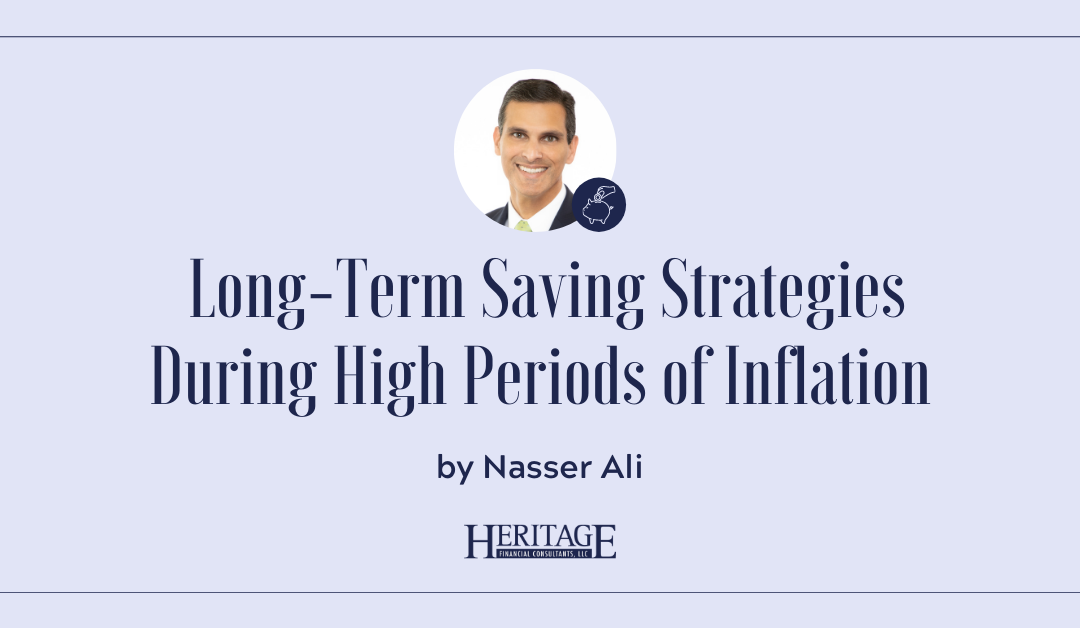Heritage’s Director of Investment Management Nasser Ali wrote about inflationary pressures, how long term investment strategies can help investors and the pitfalls to avoid.
Inflation is the topic du jour. Clearly, this is a result of recent inflation data coming in higher-than-expected, leading investors to contemplate inflation’s durability. Will it be near-term and transient, as The Fed expects, or long-term and potentially corrosive to investment portfolios? Either way, there are long-term strategies and pitfalls to avoid that investors should consider.
To hedge inflation, investors should look to tangible assets and/or investments that can adjust cash flows for inflationary pressures. Commodities and REITs would be considered tangible assets.
Commodities tend to be directly consumed or utilized in a process to create a final good. In either instance, commodity prices form an input into the inflation data. REITs, being a tangible asset, also have the benefit of adjusting rents and leases with rent bumps to offset inflationary pressures and compensate investors with added cash flow. It is worthy to note that increasing eCommerce and COVID repercussions may adversely impact the future roll and valuations of REITs. Tread carefully.
Assets that have the ability to adjust their cash flows are Treasury Inflation-Protected Securities (TIPS) and equity investments.
TIPS, by their nature, adjust their principal value for inflation changes. In other words, TIPS is a direct inflation hedge. Stock pricing is ultimately centered around their companies’ earnings. As such, companies have the ability to adjust the pricing of their offered goods and services to inflation over the long term. Admittedly, there are idiosyncratic aspects that may limit their response in the near term. Additionally, investors should not look for equities as a near-term inflation hedge and stock prices can be volatile and risky.
What are some things to think about as an investor to avoid the pitfalls when it comes to inflationary pressures?
For starters, investment classes to deemphasize are investments with fixed cash flows, most notably fixed-income investments. For the most part, bonds offer fixed interest rates and no ability to adjust interest being paid to investors (save floating rate bonds).
Generally, the higher the bond credit, the higher the bond’s sensitivity to inflationary pressures. This tends to be true as the higher bond credits have a lower chance of default, making rising inflation and/or rising interest rates the highest risk to the bond values.
It is important to inform investors not to avoid bonds, as investment-grade bonds generally do not have the near-term drawdown profile of equities, REITs, or commodities. Hence, bonds, even with inflation pressures ahead, generally act as a shock absorber to stock market risk.
Bonds have fixed principal value and yield if held to maturity. Prices of fixed-income securities may fluctuate due to inflation, credit and interest rate changes. Investors may lose money if bonds are sold before maturity. CRN-3700271-080321


Recent Comments